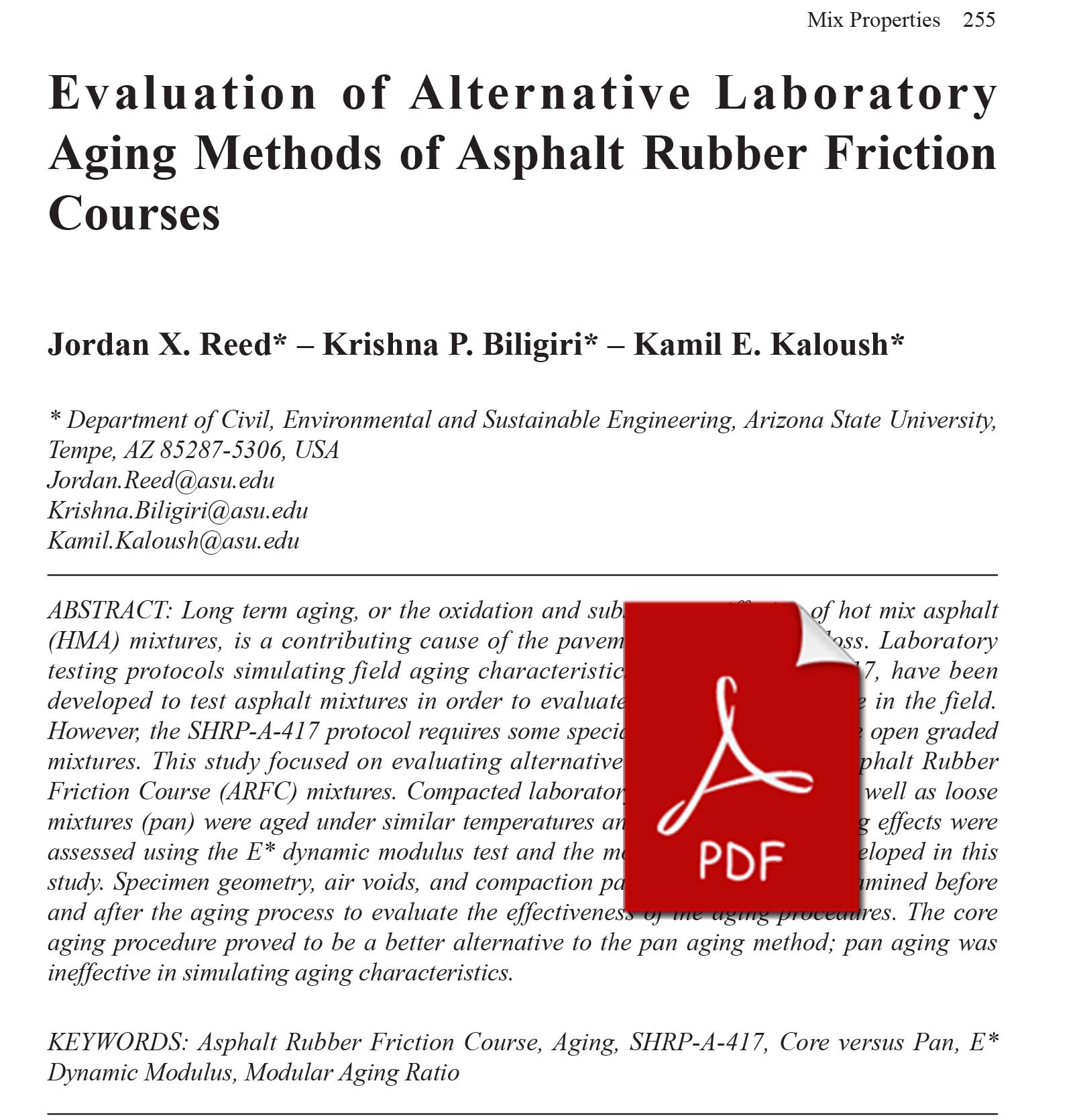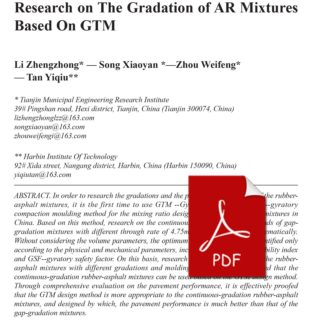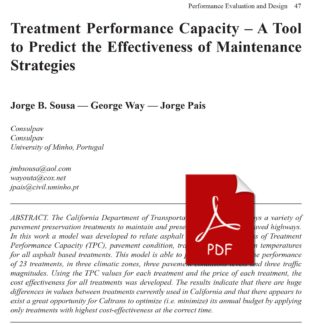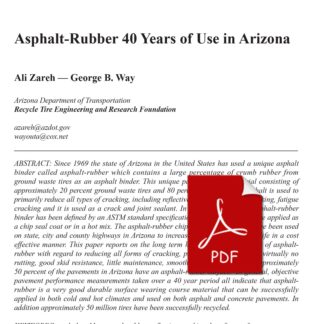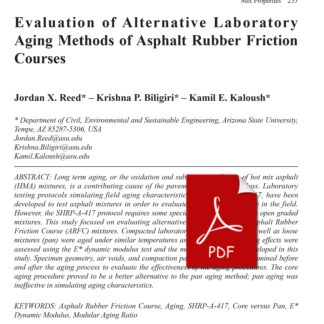Description
Long term aging, or the oxidation and subsequent stiffening of hot mix asphalt (HMA) mixtures, is a contributing cause of the pavement’s performance loss. Laboratory testing protocols simulating field aging characteristics, such as SHRP-A-417, have been developed to test asphalt mixtures in order to evaluate their aging resistance in the field.
However, the SHRP-A-417 protocol requires some specialized equipment to age open graded mixtures. This study focused on evaluating alternative aging methods for Asphalt Rubber Friction Course (ARFC) mixtures. Compacted laboratory specimens (cores) as well as loose mixtures (pan) were aged under similar temperatures and time durations. Aging effects were assessed using the E* dynamic modulus test and the modular aging ratio developed in this study. Specimen geometry, air voids, and compaction parameters were also examined before and after the aging process to evaluate the effectiveness of the aging procedures. The core aging procedure proved to be a better alternative to the pan aging method; pan aging was ineffective in simulating aging characteristics.

